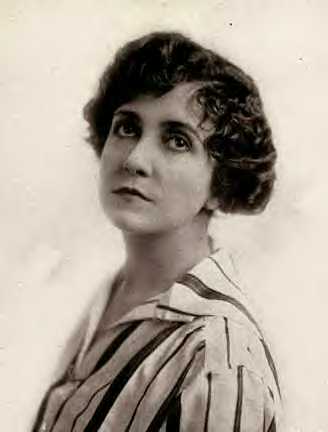Florence Turner (Florence Turner)

Actress. She was one of the cinema’s first matinee idols. In the years before World War I, when films were considered disreputable and actors appeared in them anonymously, Turner was known to millions as “The Vitagraph Girl”, after the studio where she worked. Public demand forced Vitagraph to reveal her name. She was also one of the first film figures to make personal appearances. Along with Florence Lawrence (“The Biograph Girl”) and Maurice Costello, Turner helped create the star system in American movies. Turner was born in New York City, and made her stage debut at age three. In 1906 she joined Vitagraph, where she initially had to sew costumes and canvas scenery as well as perform. Versatile and handsome, she quickly became Vitagraph’s leading actress and appeared in its most prestigious productions, including “Richard III” (1908), “The Merchant of Venice” (1908), “Francesca da Rimini” (1910), “Twelfth Night” (1910), “A Tale of Two Cities” (1911), “Romeo and Juliet” (1912), and “The Deerslayer” (1913). Turner was adored by early moviegoers and revered by fellow actors. A later silent screen star, Norma Talmadge, said admiringly, “I would rather have touched the hem of her skirt than have shaken hands with Saint Peter”. In 1913 she went on to even greater success in England, where she formed her own company, Turner Films, Ltd., and produced some of the finest British films of the period, including “Far From the Maddening Crowd” (1915) and “East Is East” (1915). She not only starred but cowrote the scripts and sometimes directed as well. The war put an end to her studio and she returned to the United States, only to find that American audiences had already forgotten her. In the early 1920s Turner attempted to revive her fading fortunes in England again, but a depression in the British film industry sent her back to Hollywood. There she was relegated to small supporting roles, such as playing the mother of Buster Keaton in “College” (1927). The arrival of talkies saw Turner begging for work. In 1937 she became one of the so-called “Old-Timers”, a group of aging, neglected former stars who were employed as $75-a-week extras by MGM as an act of charity. Her last role was an uncredited bit in “Thousands Cheer” (1943). Turner died at the Motion Picture Country Home. At her request there was no funeral service and her ashes were locked away from the public that had abandoned her. (bio by: Bobb Edwards)
Born
- January, 06, 1885
- USA
Died
- August, 08, 1946
- USA
Cemetery
- Chapel Of The Pines Crematory
- California
- USA

